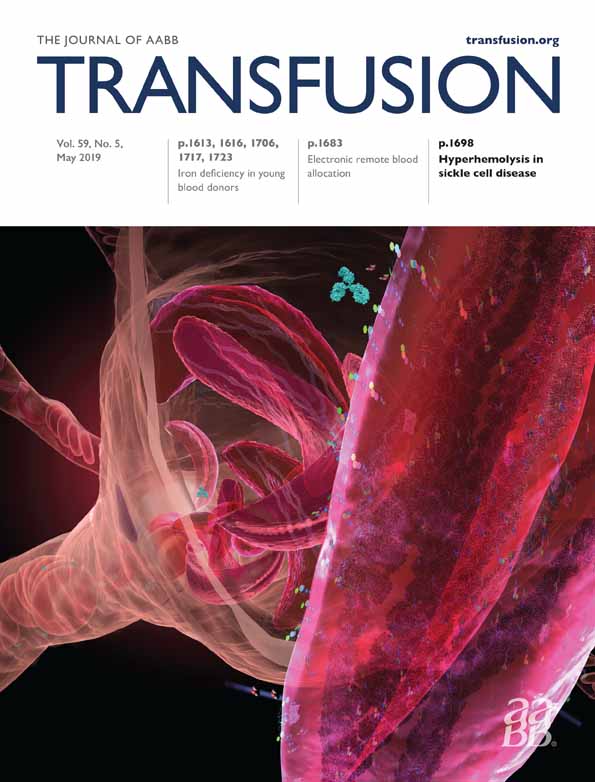Changes in minimum hemoglobin and interdonation interval: impact on donor hemoglobin and donation frequency
Abstract
BACKGROUND
To reduce donor iron deficiency in whole blood donors, we changed our hemoglobin (Hb) cutoff in males and interdonation interval in females.
STUDY DESIGN AND METHODS
A change in messaging to females in fall 2016 was followed by changing the interdonation interval from 56 to 84 days in the appointment booking system (December 2016) and actual donation criterion (March 2017). The minimum Hb for males increased from 125 g/L to 130 g/L (March 2017). We evaluated Hb levels and deferral rates, donor presentations with a Hb level below 120 g/L, donation frequency, and donor base size before and after these changes.
RESULTS
The Hb deferral rate decreased in females from 13.0% to 9.5%, increased in males from 1.2% to 2.1%, and decreased overall from 6.8% to 5.4% (all p < 0.001). Mean Hb increased from 135.0 g/L to 136.2 g/L in females and from 149.9 g/L to 150.6 g/L in males (both p < 0.0001). The percentage of presentations with Hb below 120 g/L decreased by 27% in males and females (p < 0.001). Annual donation frequency decreased by 12% in females and 4% in males; the donor base was expanded by 5.8%.
CONCLUSIONS
Many positive impacts were seen for female donors, including a shift in the Hb distribution curve to the right, and a large reduction in Hb deferrals. For males, there was an increase in Hb deferrals and a small increase in mean Hb. Changes were related to both reduced donation frequency and a shift in composition of the donor base.
CONFLICT OF INTEREST
The authors have no conflicts of interest to disclose.




